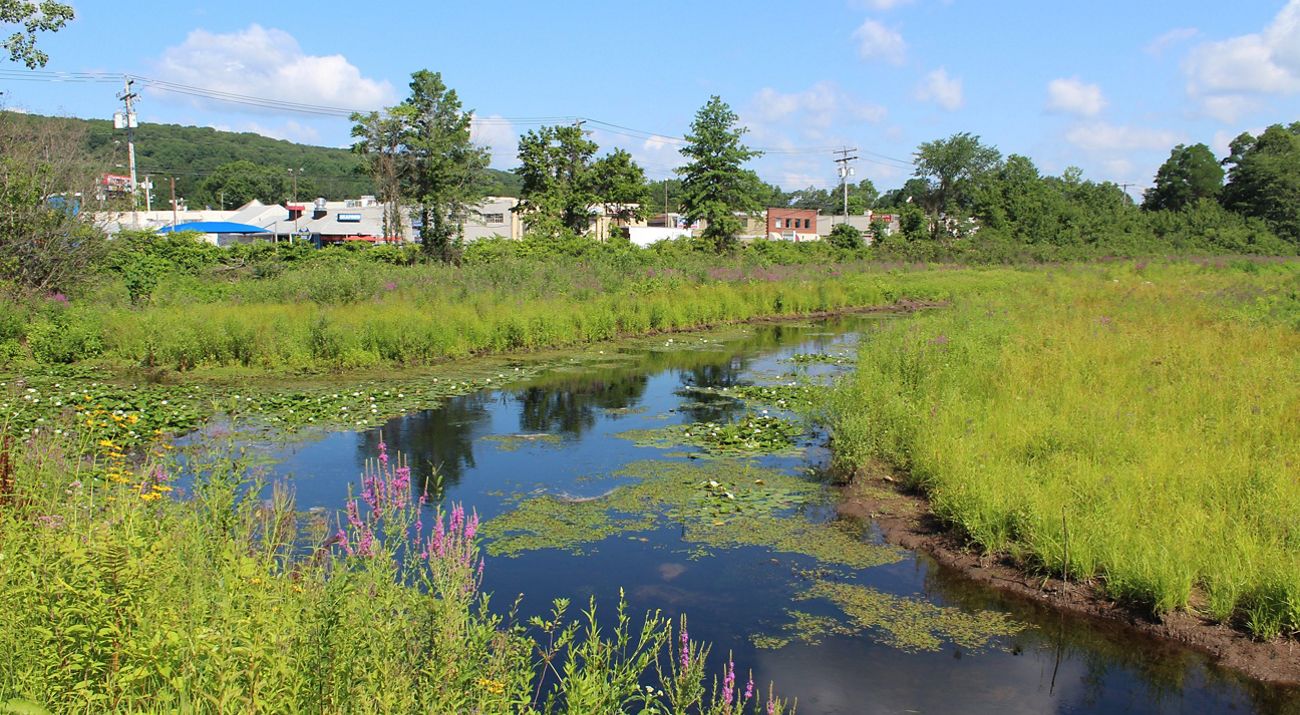Dam Removal Report Highlights Reconnecting Rivers
The Long Island Sound River Restoration Network released a new report on dam removal that examines solutions for people and nature.
Media Contacts
-
Susan Wollschlager
The Nature Conservancy
Phone: 203-209-6218
Email: s.wollschlager@tnc.org
The Nature Conservancy contributed to a recently released report on dam removal by the Long Island Sound River Restoration Network, having been involved in dam removals for many years. The Dam Removal Report examines solutions for people and nature while highlighting a project on the West River in New Haven.
“It is exciting to have a collaborative report that all River Restoration Partners can share,” says Emily Hadzopulos, TNC's freshwater restoration project manager in Connecticut. “The dam removal report provides an engaging and succinct overview of why free-flowing rivers are important to Long Island Sound and how we can achieve free-flowing rivers through projects like dam removal.”
There are more than 5,000 dams in Connecticut alone, equating to nearly one dam per square mile. Given their prevalence, and more intense storms across our state, dams are a substantial segment of infrastructure and demand a growing amount of attention. As weather events escalate, aging and fragile dams are at risk of failure—that means local communities are at risk, too.
Restoring free-flowing rivers builds community resilience, provides a clear and unobstructed path for fish, especially during important migratory periods, allows native flora and fauna to thrive, improves local ecosystems, and much more.
Many dams once built to divert or hold water for hydroelectric facilities, provide recreational use, assist in water supply and support mechanical power have grown obsolete.
The Dam Removal Report explores the importance of free-flowing rivers and what happens once a dam has been removed. The New Haven case study illustrates how free-flowing rivers can decrease flooding, provide fish passage and improve water quality.
Pond Lily Dam was located on a highly developed portion of the West River. Removing the dam reconnected 2.6 river miles while reducing flood risk and restoring habitat. Post-removal monitoring showed that 76 acres of habitat were restored, and 60 times more alewife—a critical species of migratory fish—were present in annual fish runs five years post-removal. Native wetland plants also rebounded in the dam’s former pond impoundment which contributed to increased biodiversity and resiliency.
While this report focuses on dam removal, the Long Island Sound River Restoration Network works together on other stream barriers, such as the replacement of undersized or misaligned culverts. Besides TNC, the network’s other non-profit members include American Rivers, Connecticut River Conservancy, the Farmington River Watershed Association, the Housatonic Valley Association, Save the Sound, Seatuck Environmental Association and Trout Unlimited.
By collectively developing projects, sharing resources, communicating the benefits of restored river systems, and coordinating with regulators and funders, the network is building regional capacity, resources and support for dam removal.
The Nature Conservancy is a global conservation organization dedicated to conserving the lands and waters on which all life depends. Guided by science, we create innovative, on-the-ground solutions to our world’s toughest challenges so that nature and people can thrive together. We are tackling climate change, conserving lands, waters and oceans at an unprecedented scale, providing food and water sustainably and helping make cities more resilient. The Nature Conservancy is working to make a lasting difference around the world in 81 countries and territories (40 by direct conservation impact and 41 through partners) through a collaborative approach that engages local communities, governments, the private sector, and other partners. To learn more, visit nature.org or follow @nature_press on X.
